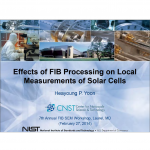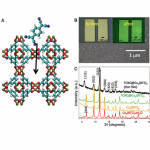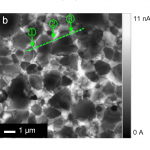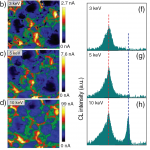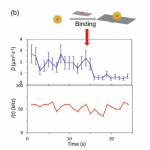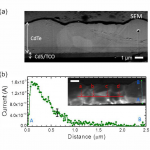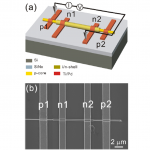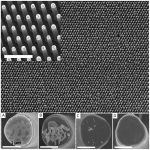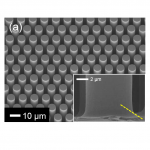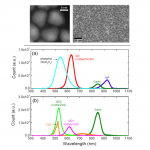 “Cathodoluminescence quantum efficiency of quantum dot thin films”, H. P. Yoon, C. D. Bohn, Y. Lee, S. Ko, J. S. Steckel, S. Coe-Sullivan, N. B. Zhitenev, The Society for Information Display Technical Digests 45, 71–74, 2014.
“Cathodoluminescence quantum efficiency of quantum dot thin films”, H. P. Yoon, C. D. Bohn, Y. Lee, S. Ko, J. S. Steckel, S. Coe-Sullivan, N. B. Zhitenev, The Society for Information Display Technical Digests 45, 71–74, 2014.
1. Center for Nanoscale Science and Technology, National Institute of Standards and Technology, Gaithersburg, MD 20899, United States
2. Maryland Nanocenter, University of Maryland, College Park, MD 20742, United States
3. QD Vision Inc., 29 Hartwell Ave., Lexington, MA 02421, United States
ABSTRACT. A thin film of quantum dots (QD) was used to visualize the local photo-response of polycrystalline CdTe solar cells by downconverting an electron beam of high energy to photons of visible light. The efficient photon generation in the QD film is compared to cathodoluminescence of the high-purity bulk semiconductors and phosphor.


